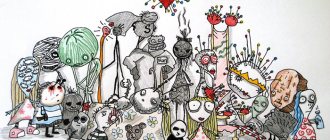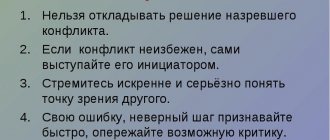Stress in our lives is quite common. Almost all people experience them, feel them, and talk about them. The reason for this phenomenon today is everything that a person faces every day, from work and family relationships to the situation in the country and in the world in general. But the human body is designed in such a way that it constantly needs balance. And what happens in life, including the relationship of people to each other, systematically violates this balance, as a result of which the body is simply forced to work to the limit of its capabilities, while trying, at the same time, to maintain the balance of all physiological and mental processes, in other words, to function practically without rest. The good news is that a person is able to overcome stressful situations of almost any severity, neutralizing the pressure exerted on him by external circumstances. But before we talk about how this usually happens, let's say a few more words about stress.
And if this topic seems interesting to you and you want to develop even more in it, we recommend our course “Mental Self-Regulation”, where you will learn real practical techniques for self-motivation, stress management and social adaptation in order to always control your emotional and mental state. Find out more about the course
General characteristics of stress
A stressful state is characterized as a tense physical and mental state of the body. In general, in minimal doses, stress is needed by the body to maintain its optimal operating mode, but in excessive quantities it has an extremely negative effect on a person’s well-being and efficiency, thus causing psychosomatic diseases.
The founder of the doctrine of stress is the Canadian pathologist and endocrinologist Hans Selye, according to whose ideas stress is a stimulus for the body to achieve resistance in response to negative factors.
Selye identified two types of stress:
- Eostress – stress that causes a positive effect
- Distress is stress that causes a negative effect
Stress consists of three phases:
- Alarm phase
- Resistance phase
- Exhaustion phase
It is interesting that people with a stable psyche are able to overcome the stage of anxiety, thereby avoiding stress.
If we talk about the present time, then stress is divided into emotional and informational. The first is associated with the emotional component of a person’s life, and the second is associated with the huge amount of information that bombards him. But, whatever the stress, its impact on the individual is in most cases the same. In the process of studying the influence of stress on a person, the question arose about his coping with difficult life situations, and the theory of coping appeared.
Coping theory
The theory of coping, as a question about a person’s interaction with problems in life, appeared in psychological science in the second half of the 20th century. And the very concept of “coping” (from the English “to cope” - to cope, cope) was introduced by the famous American psychologist Abraham Maslow.
Coping is usually understood as a person’s constantly changing behavioral and cognitive attempts to cope with special internal or external demands that are assessed as tension or exceed the individual’s ability to overcome them. In simpler terms, coping is a form of behavior that reflects a person’s readiness to solve life’s problems; behavior that is aimed at adapting to circumstances and which implies an already formed ability to use specific means to cope with stress. Choosing active actions increases the likelihood of a person eliminating the impact of sources of stress on his personality.
The details of this skill are intertwined with self-concept, empathy, environmental conditions, and locus of control. According to Abraham Maslow, coping behavior is the opposite of expressive behavior.
Where did the term come from?
Dr. Richard Lazarus
Coping strategies are everything that helps a person overcome stressful tension. A stressful situation is characterized by anxiety, complexity, and uncertainty. Coping strategies provide an opportunity to cope with a difficult problem. The strategy can be emotional or behavioral. The Russian psychological school uses the concept of “experience” or coping behavior. The essence of coping is to enable a person to overcome life’s difficulties or reduce their impact on the body.
The term appeared in psychology in the early sixties of the last century. It was used by L. Murphy; he used it to describe how to overcome childhood developmental crises. A few years later, cognitive psychologist Richard Lazarus described strategies for coping with stressors in his book.
Problem Resolution
Problem solving can also include avoiding problems and seeking social support. Coping behavior here is implemented through the use of strategies that take as a basis the resources of the individual and the environment. One of the most important environmental resources is social support, and personal ones include positive self-esteem, an optimistic worldview, the potential for empathy, an internal locus of control, the ability for interpersonal interaction and some other psychological structures.
When a source of stress affects a person, a primary assessment occurs, based on which the type of situation is determined - favorable or threatening. From this moment, individual protection mechanisms begin to form. The processes that characterize a person’s coping with an unfavorable situation are part of the emotional reactions on which emotional stability depends. They are aimed at removing, eliminating or reducing the current source of stress, which at this stage is assessed secondarily. The result of the secondary assessment is that the person chooses one of three further behavioral strategies.
Diagnostic technique for determining strategies
In order to determine which strategy to use in a given situation, it must be diagnosed. The diagnostic technique was developed by the psychologist Amirkhan. He divided problem solving mechanisms into 3 groups:
- Independent resolution of the situation;
- Seeking help from other individuals, including psychological help;
- Self-relief from stress.
Learned helplessness - what is this condition?
Any person should know and apply all three strategies in life, because only he himself determines the level of stress. For some, the situation will be resolved without the help of society; in other cases, the person will not be able to cope with it on his own. In the second option, he will use a second or third mechanism to fix the problem.
Note! When an individual uses diagnostic techniques to determine further behavioral reactions, coping strategies are conscious and voluntary. The individual independently evaluates and takes responsibility for each of his actions.
Diagnosis can be carried out independently, using online applications, and a psychologist can also help with this if the stressful situation is prolonged and poses a threat to the mental health of the individual.
Coping
Coping occurs, as a rule, without the participation of the emotional component, but only in the case when the threat to a person is not assessed by him as real, for example, when he does not come into contact with objects, does not interact with people, etc.
Whatever the protective process, it will always be aimed at ridding a person of the mismatch of his motives and disunity of feelings, protecting him from receiving and realizing painful and negative emotions and eliminating tension and anxiety.
Maximum protection, which gives the greatest result, at the same time is only a tiny fraction of what coping behavior is generally capable of. Effective use of coping strategies can increase a person’s ability to adapt, but only when coping strategies are applied consciously, actively and depending on the specific situation.
Procedure
Instructions
You will be offered a number of statements regarding the characteristics of your behavior. Try to remember how you most often resolve difficult and stressful situations and situations of high emotional tension. Please circle the number that suits you. In each section of statements, you must select only one option with which you resolve your difficulties.
Please answer according to how you have dealt with difficult situations recently. Don’t hesitate – your first reaction is important. Be careful!
Criterion for success or failure
A coping strategy, based on the third criterion, can be successful - use constructive behavior to overcome a stressful situation, or unsuccessful - use unconstructive behavior that does not allow one to overcome a stressful situation.
Any coping strategy that a person uses can be assessed based on the above criteria, even for the simple reason that a person who finds himself in a stressful situation can use either one or several coping strategies at once.
Based on all this, we can assume that there is a direct relationship between those personality patterns through which people form their attitude towards the difficulties and problems that arise in life, and which coping strategy they choose. And in order to understand which coping strategy is best for you personally, you need to know yourself as best as possible and understand your reactions to certain events happening in life.
We also recommend reading:
- Storytelling
- How to cope with stress
- How to sleep and relax more
- Stress Diary
- Uncontrolled aggression, self-isolation and inaction: the influence of the body's physiological response on human behavior
- Ways to relieve stress
- Stress: is there any benefit from it and how to get it?
- Impact of stress on quality of life
- Stress and burnout: a large practical digest
- Stress. What is it and how to remove it
- Ways to get rid of morning stress
Key words:1Psychoregulation
Two ways to cope with anxiety
Freud pointed out that there are two main ways to cope with anxiety. The first, healthier way, he saw as interacting with the anxiety-provoking phenomenon: this could include overcoming an obstacle, becoming aware of the motives of one’s behavior, and much more. The second, less reliable and more passive way is a way to overcome anxiety through unconscious deformation of reality (it can be external and internal), that is, a way to form a kind of defense mechanism. In modern psychology, this idea has acquired a new meaning in the form of a separation of the concepts of protective strategies and strategies for coping with stress and other anxiety-provoking events. Coping strategies can be different, but they are always thoughtful, rational and aimed at the source of anxiety (for example, a student experiencing anxiety before a specific exam may choose different strategies to prepare for it and pass it successfully). Defensive strategies, on the other hand, are unconscious, irrational behavior.
R. Lazarus identified two global types of stress reactions: problem-oriented and subject-oriented. The first is associated with a rational analysis of the problem, with the construction of a plan for solving a difficult situation and is expressed in an independent analysis of what happened, in seeking help from others, in searching for additional information. The second concerns an emotional reaction to a situation; it is not accompanied by specific actions, since a person tries not to think about the problem at all, forget about it during sleep, distract himself from negative emotions with drink or food, and involve others in his experiences.
R.R.M. Granovskaya and I.M. Nikolskaya (2001) found that adults most often use the following ways to cope with internal tension [11]: interaction with products of human creativity (reading books, listening to music, visiting museums) or drawing, writing poetry, singing, i.e. express yourself creatively; seek support from friends and acquaintances; immerse yourself in work; change the type of activity from mental to physical (sports, walks, water procedures) or use the so-called “for-” techniques (eat, sleep, fall in love, have fun, dance); comprehend the situation that has arisen.
Children and adolescents have different coping strategies. The most typical are the following: to remain alone, alone; hug, cuddle, caress; cry, be sad; swear, argue; pray; ask for forgiveness, tell the truth; talk to yourself; Think about it; try to forget; try to relax, stay calm; watch TV, listen to music.
Modern authors evaluate coping strategies in terms of their effectiveness or ineffectiveness, using a reduction in feelings of vulnerability to stress as a criterion for effectiveness.
For example, there is evidence that problem-focused coping responses (e.g., trying to change something in a stressful relationship with another person or between other people in a social setting) are associated with lower levels of negative emotions in stressful situations that are perceived as controllable. . Moreover, the use of problem-focused coping strategies is negatively associated with behavioral and social problems. In this regard, it has been shown that children and adolescents who use fewer problem-focused coping strategies have more adjustment problems. In contrast, frequent use of emotion-focused coping is associated with more severe behavioral problems and more symptoms of anxiety and depression.











